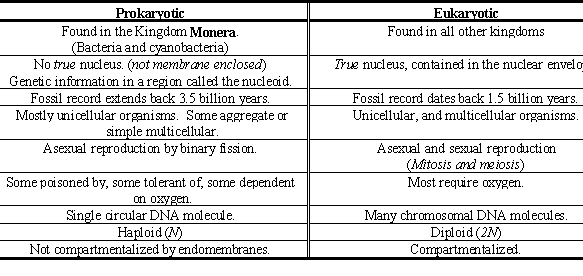Contents
Cell Structures... Prokaryotic Cells vs. Eukaryotic Cells... Comparing and Contrasting Prokaryotic, Animal, and Plant cells...
Cytoskeleton Microfilaments Microtubules
Cilia Flagella Basic Cross Section The Nucleus Nuclear envelope Nuclear
pores Chromosomes Chromatin
Nucleolus The cytoskeleton is the integrated network
of fibers (microfilaments and microtubules) in the cytoplasm that controls
cell circulation, cell shape, cell mobility, and holds organelles
in place
(actin filaments) Microfilaments (part of the cytoskeleton)
are fibers of twisted F-actin (fibrous actin) chains of
G-actin (globular actin) monomers. They are used in muscle
contraction by interacting with myosin. They also function in
cell division and movement. Microtubules (part of the cytoskeleton)
are hollow tubes of globular proteins calles tubulins. In most
cells the microtubules radiate out from the microtubule organizing
center (near the centrioles in animal cells). These are
used for cell support and structure. They also play a part in
movement of organelles and chomosome seperation.
A cellular appendage used for movement in most
cases. Cilia have the basic structure
of flagella but are smaller and much more
abundant on one cell. Cilia cause movement by a back and forth
motion, like rowing a boat.
A cellular appendage used for mobility. Flagella
have the same structure as cilia,
but are larger, and usually a cell only has one, two, or sometimes
three flagella. Movement by flagella utilizes a undulating (snakelike)
pattern.
"9+2" - Nine outer microtubule pairs,
two inner microtubules.
The brain of the cell that contains
the genetic material (chromosomes)
that controls cell processes.
A double phospholipid bi-layer membrane with
embedded proteins that encloses the parts of the nucleus.
The inner membrane helps hold the shape of the nucleus, and may
help in the organization of genetic matter.
The nuclear envelope is perforated by nuclear
pores.
Openings through the nuclear
envelope at which the two membranes are fused that work in
macromolecule (such as ribisomal proteins and subunits)
transportation into, and out of the nucleus.
Structures of proteins and DNA in the nucleus.
The mass of chromosomes
in the nucleus.
A structure within the nucleus
that functions in the synthesis of ribosomes. The structure is
a mass of granules and fibers, consisting of nuclear organizers
(specialized regions of DNA for ribosomal synthesis), RNA,
and proteins.
Cell Structures
Cytoskeleton
Microfilaments
Cilia
Flagella
Basic "9+2" structure of cilia
and flagella
The Nucleus
Nuclear Envelope
Nuclear Pores
Chromosomes
Chromatin
Nucleolus
Prokaryotic Cells vs. Eukaryotic Cells

Comparing and Contrasting Prokaryotic, Animal and Plant
Cells

This
page was last altered 8/14/01